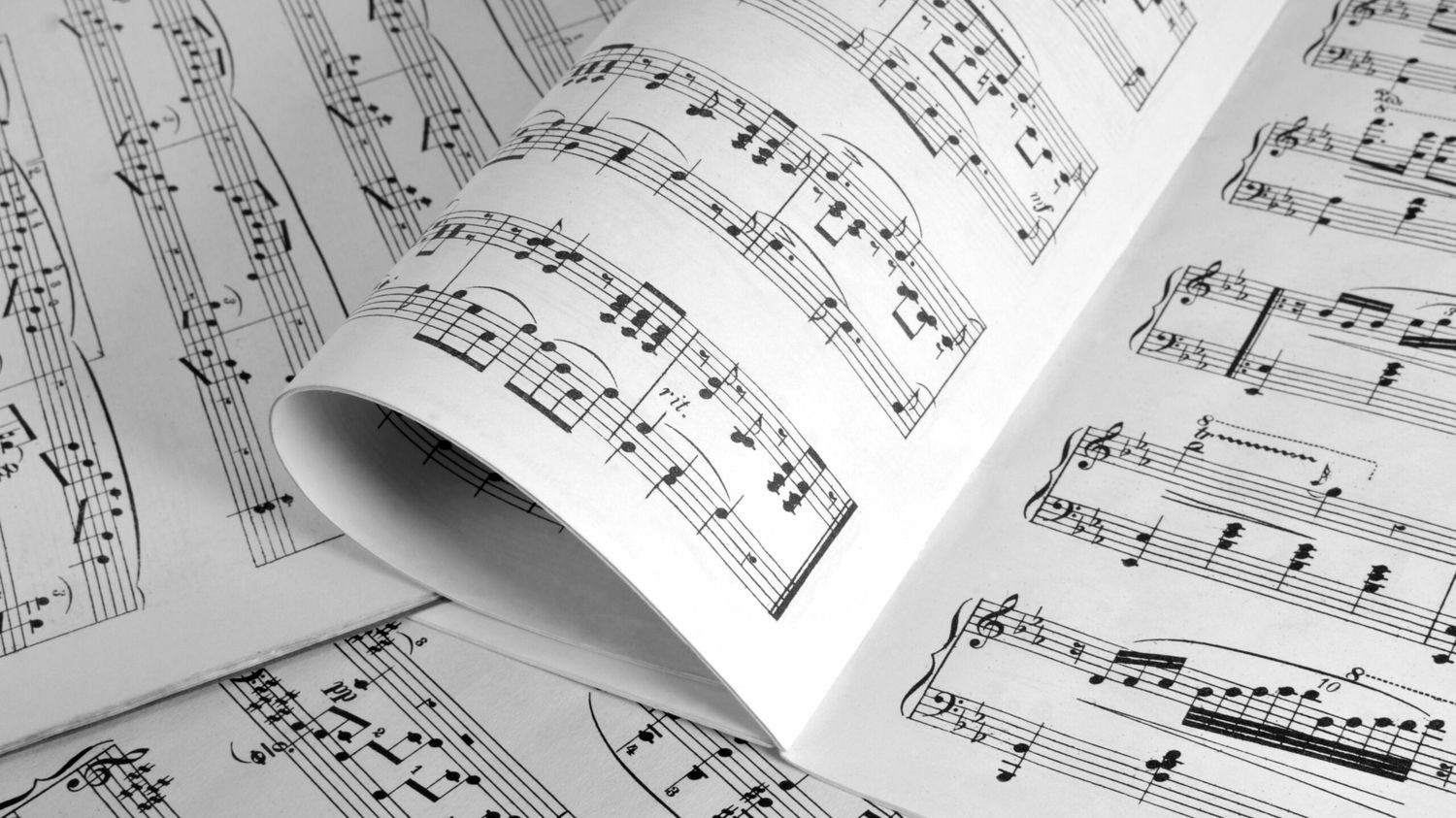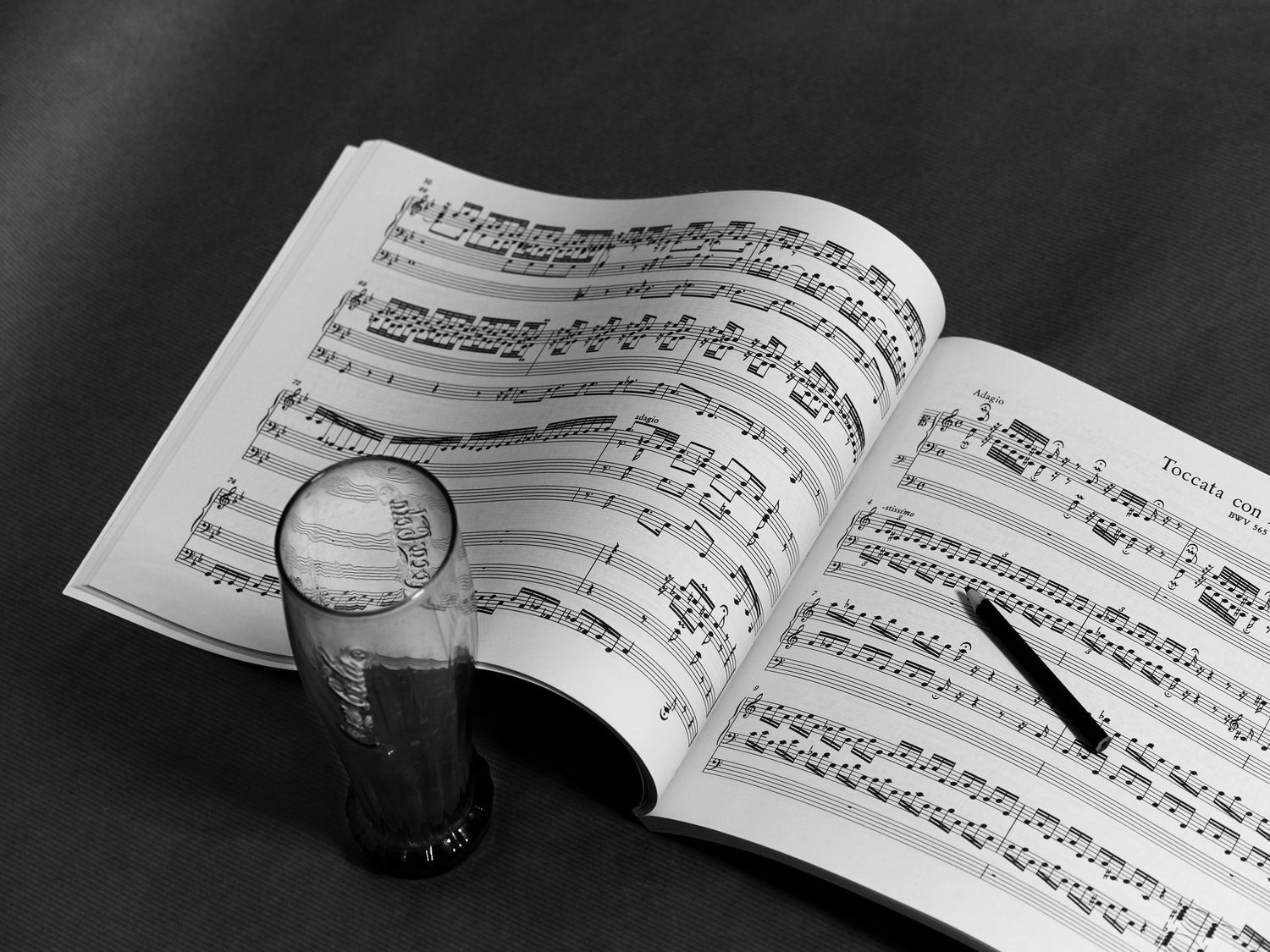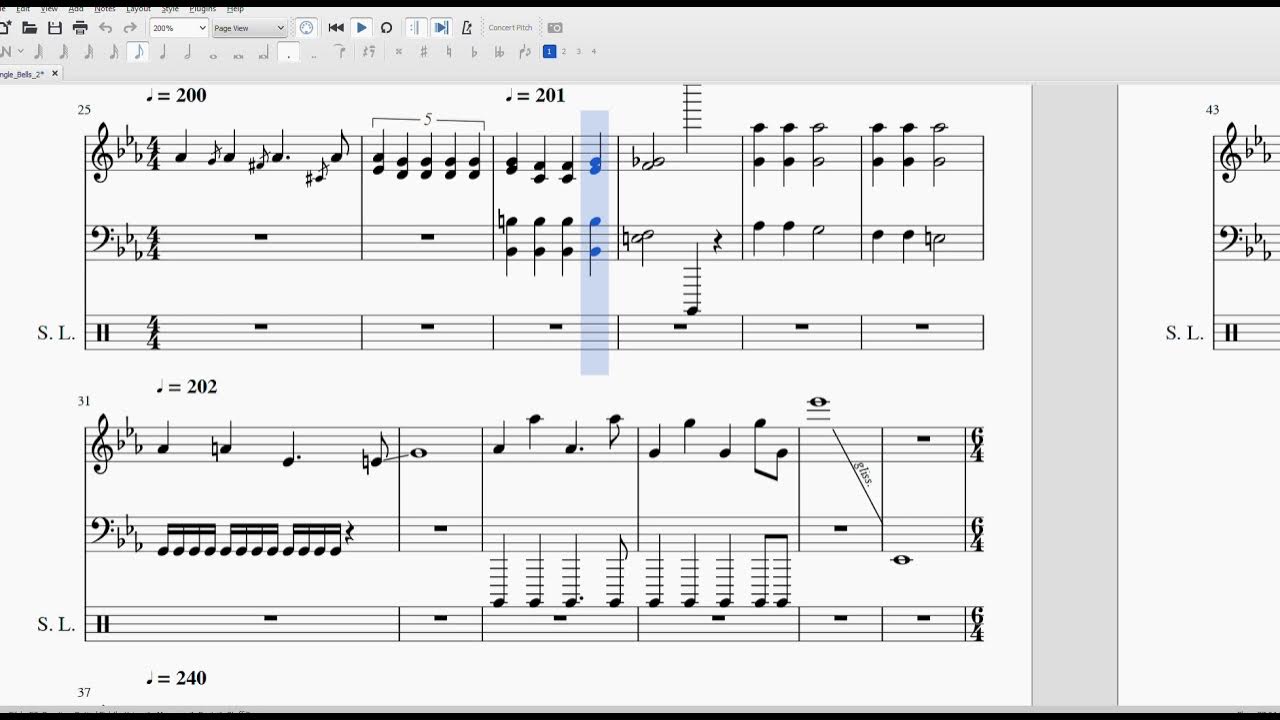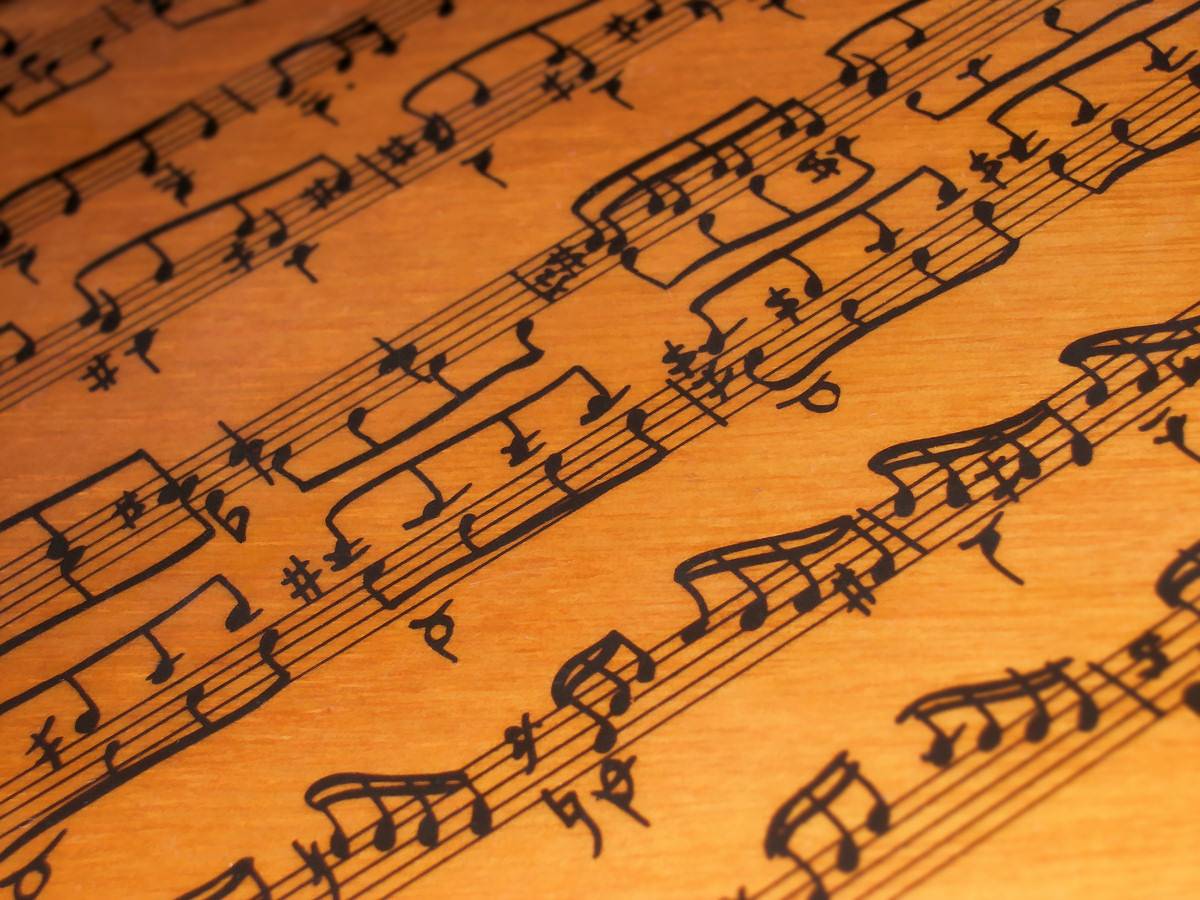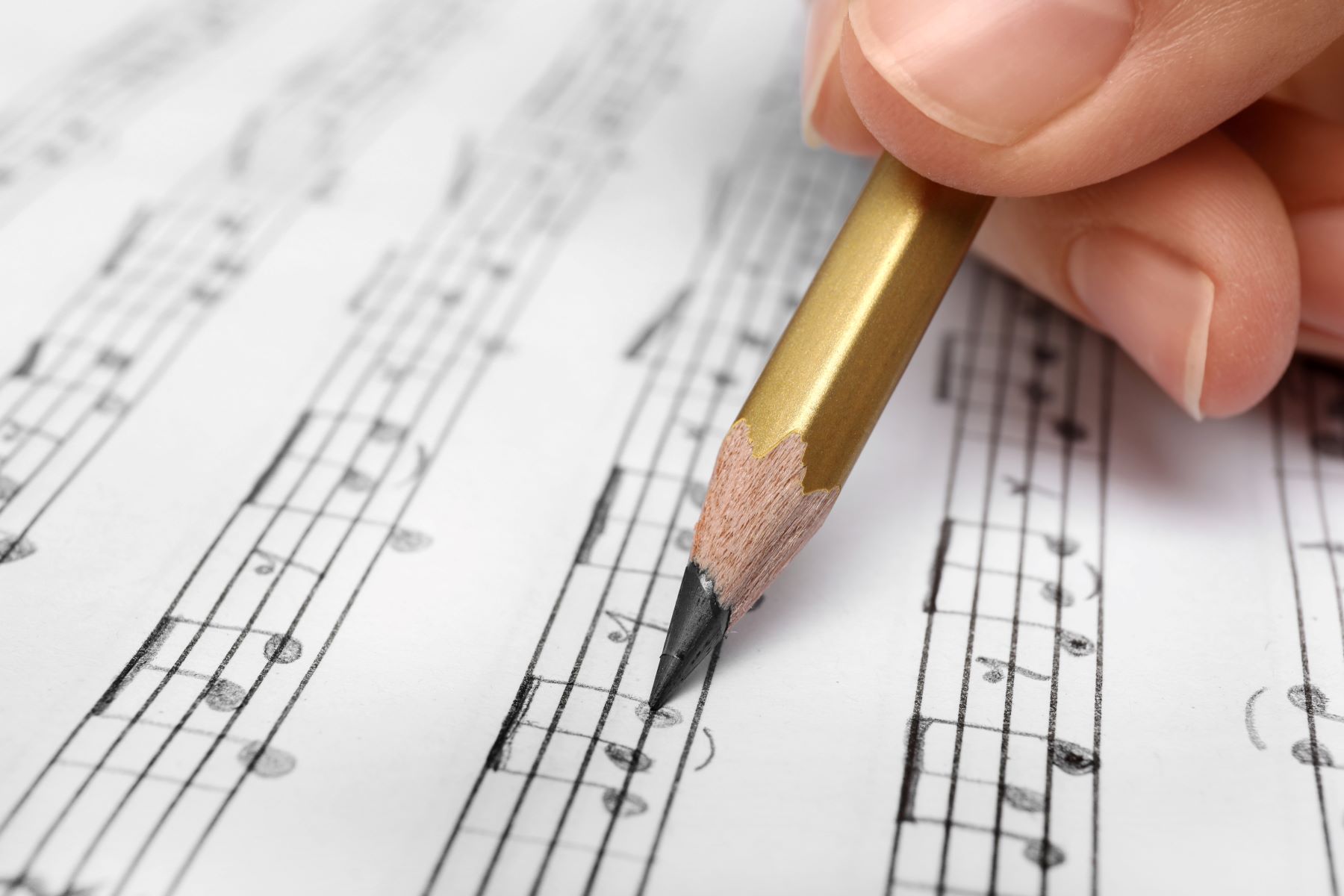Home>Events & Info>Note>How To Write A Note Music Theory


Note
How To Write A Note Music Theory
Published: December 5, 2023
Learn how to write a note in music theory, including its importance, symbols, and placement. Master the fundamentals and enhance your musical compositions.
(Many of the links in this article redirect to a specific reviewed product. Your purchase of these products through affiliate links helps to generate commission for AudioLover.com, at no extra cost. Learn more)
Table of Contents
Introduction
Welcome to the fascinating world of music theory! Whether you are an aspiring musician, a seasoned composer, or simply an enthusiast looking to expand your knowledge, understanding how to write and interpret musical notes is essential. Musical notes are the building blocks of music, and grasping the fundamentals of note writing is crucial in order to create harmonious melodies, captivating harmonies, and memorable compositions.
In this article, we will explore the art of writing musical notes and delve into the basics of music theory. From understanding note names and durations to exploring note values, pitch, and octaves, we will cover a wide range of topics that will empower you to express yourself through the language of music.
Music theory can seem daunting at first, but we will guide you step by step and provide practical examples to illustrate each concept. So, whether you are learning to play an instrument, composing your own songs, or simply curious about the inner workings of music, let’s dive into the world of writing musical notes and unlock the secrets of music theory.
Understanding Musical Notes
Before we dive into the intricacies of writing musical notes, it is crucial to understand what exactly a musical note is. In the realm of music theory, a note represents a specific sound or pitch. It is the fundamental building block of music, and each note carries its own unique characteristics.
A musical note is represented by a symbol, usually an oval shape with a stem or tails. The position of the note on the musical staff determines its pitch, with higher notes positioned higher on the staff and lower notes positioned lower. Notes are written on the staff using lines and spaces. The lines represent higher pitches, while the spaces represent lower pitches.
There are seven letters used to name musical notes: A, B, C, D, E, F, and G. These letters represent the pitch of the note, and each note can be modified by sharps (#) or flats (♭) to raise or lower the pitch by a half step. For example, A# (A sharp) is slightly higher in pitch than A, while B♭ (B flat) is slightly lower in pitch than B.
Furthermore, musical notes can also be represented by numbers. These numbers indicate the octave of the note, which refers to the range of pitches. For example, Middle C is commonly notated as C4, indicating that it is in the fourth octave on the piano.
Understanding the fundamentals of musical notes is crucial when it comes to writing and reading sheet music. By familiarizing yourself with note names, pitches, and octave ranges, you will gain the ability to convey your musical ideas accurately and precisely.
Now that we have a solid foundation in understanding musical notes, let’s explore the basics of music theory and how notes are written.
The Basics of Music Theory
Music theory is the study of how music is constructed and organized. It provides us with a set of guidelines and principles that help us understand and create music. By understanding the basics of music theory, we can effectively write and arrange musical notes to create pleasing and cohesive compositions.
One of the fundamental concepts of music theory is the notion of scales. A scale is a series of musical notes arranged in ascending or descending order. The most common scale is the major scale, which consists of seven notes. These notes are named after the first seven letters of the alphabet (A, B, C, D, E, F, G). The major scale follows a specific pattern of whole steps (W) and half steps (H) between the notes: W-W-H-W-W-W-H. By learning and understanding this pattern, you can construct major scales starting on any note.
In addition to scales, music theory encompasses concepts such as chords and harmonies. A chord is a group of three or more notes played together to create a specific sound. Chords provide the harmony and structure to a piece of music. By combining different notes and chord progressions, you can create different moods and emotions in your compositions. Understanding how chords are constructed and how they function in a key is essential for writing harmonies that complement the melody.
Another significant aspect of music theory is rhythm. Rhythm is the pattern of sounds and silences in music. It gives music its heartbeat and groove. Musical notes have different durations, which dictate how long each note is played. Common note durations include quarter notes, half notes, and whole notes. By combining different note durations and using time signatures, you can create compelling rhythms and syncopations.
Understanding music theory also involves learning about musical forms and structures. Different genres and styles of music have their own unique structures, such as verse-chorus, AABA, or sonata form. These structures provide a framework for organizing the different sections of a piece and guide the listener through the musical journey.
Music theory is a vast subject, and mastering it takes time and practice. However, by familiarizing yourself with the basic concepts, you will have a solid foundation to write and understand musical notes with confidence.
Now that we have covered the basics of music theory, let’s explore the specifics of writing musical notes.
Writing Note Names
When it comes to writing musical notes, it is essential to accurately represent the pitch of each note on paper. The note names provide a standardized way of notating the different pitches in music. By understanding how to write note names, you can effectively communicate the desired pitch to other musicians and ensure that your compositions are played correctly.
As mentioned earlier, there are seven letters used to name musical notes: A, B, C, D, E, F, and G. These letters are combined with sharps (#) or flats (♭) to indicate small adjustments in pitch. The sharp symbol (#) raises the pitch of a note by a half step, while the flat symbol (♭) lowers the pitch by a half step.
Each note name is associated with a specific position on the musical staff. The position of the note on the staff determines its pitch. The higher the note is positioned, the higher its pitch, and vice versa. Lines and spaces on the staff represent different pitches, and notes are written on these lines and spaces to indicate their pitch.
For example, the note C can be written on the first space of the staff. Moving up from C, we have the notes D, E, F, G, A, and B, before returning back to C on the next octave. This sequence repeats as the pitch increases or decreases.
By combining note names with their position on the staff, you can accurately notate and identify the pitch of each note in your compositions. This ensures that your music can be played accurately and interpreted correctly by other musicians.
Writing note names also involves indicating the duration of each note. The duration refers to the length of time that a note should be played. Common note durations include quarter notes, half notes, whole notes, and their corresponding rests. By combining the appropriate note name with the corresponding note duration symbol, you can indicate both the pitch and timing of each note in your compositions.
Whether you are writing a simple melody or a complex harmony, mastering the skill of writing note names is crucial. By accurately representing the pitch and timing of each note, you can convey your musical ideas with precision and ensure that your compositions are played as intended.
Now that we have explored the fundamentals of writing note names, let’s delve into the concept of note durations.
Writing Note Durations
In music notation, the duration of a note refers to the length of time that it is held or played. Understanding note durations is vital for accurately notating and performing music. By using various symbols and rests, musicians can convey the desired timing and rhythm of a composition.
One of the most common note durations is the quarter note. It is often used as a reference point to define the duration of other notes. A quarter note receives one beat in 4/4 time, which is a common time signature. By knowing the duration of a quarter note, you can determine the duration of other note values.
A half note lasts for two beats, twice as long as a quarter note. It is represented by an open notehead with a stem and can be easily recognized on the musical staff. Conversely, a whole note has a duration of four beats, four times longer than a quarter note. It is represented by an open notehead without a stem.
In addition to these basic note durations, there are other note values that can be used to create a variety of rhythmic patterns. Eighth notes, for example, have half the duration of a quarter note, and sixteenth notes have half the duration of an eighth note. They are denoted by adding flags or beams to their stems. Similarly, dotted notes are notes with an additional half of their value added. For example, a dotted half note has the duration of three beats.
Rests are also an important aspect of note durations. Rests indicate periods of silence or non-playing in music. They have the same durations as their corresponding notes. For instance, a quarter rest lasts for one beat, while a half rest lasts for two beats.
By combining different note durations and rests, you can create intricate and dynamic rhythms in your compositions. Understanding and effectively notating note durations allows musicians to accurately perform and interpret the rhythmic intentions of a piece of music.
Now that we have covered note durations, let’s explore the concept of note values and their relationship to tempo and meter.
Writing Note Values
Note values are an integral part of music notation and provide information about the relative duration of each note. By assigning specific durations to notes, musicians can accurately communicate the rhythm and timing of a composition. Understanding note values is essential for reading and writing sheet music, as it enables us to convey the desired tempo and meter of a musical piece.
Notes are assigned different values based on their duration in relation to a reference note, often the quarter note. The most common note values are whole notes, half notes, quarter notes, eighth notes, and sixteenth notes.
A whole note is the longest note value and lasts for four beats in 4/4 time. It is represented by an open notehead without a stem. The half note lasts for two beats and is typically seen as a notehead with a stem.
The quarter note is often used as the reference point and has a duration of one beat in 4/4 time. It is represented by a filled-in notehead with a stem. Eighth notes have half the duration of a quarter note, with two notes fitting into the space of one beat. They are denoted by adding flags or beams to their stems.
Sixteenth notes have half the duration of eighth notes and four notes fit into the space of one beat. They are represented by two flags or beams on the stem. Similarly, thirty-second notes have half the duration of sixteenth notes and eight notes fit into the space of one beat.
By combining different note values, musicians can create intricate and complex rhythmic patterns. For example, a composition may include a mixture of quarter notes, eighth notes, and sixteenth notes to create a syncopated rhythm or a sense of musical tension.
Furthermore, note values are also influenced by the tempo and meter of a composition. Tempo is the speed at which a piece of music is played, while meter refers to the grouping of beats into measures. The choice of note values and their arrangement within a measure can convey the desired rhythmic feel and groove of a piece.
Rests are also essential elements in music notation, indicating periods of silence or non-playing. Rests have the same duration as their corresponding note values. They help define the rhythmic structure of a composition and give musicians a clear indication of when to refrain from playing.
By understanding how to write note values, rests, and their relationships to tempo and meter, musicians can accurately communicate and interpret the rhythmic intentions of a musical piece. It allows for effective collaboration among musicians and ensures a cohesive and well-executed performance.
Now that we have covered note values, let’s explore how pitch and octaves are notated in music.
Writing Note Pitch and Octaves
In music notation, accurately representing the pitch of each note is crucial for conveying the intended melodic and harmonic content of a composition. Understanding how to write note pitch and use octaves effectively allows musicians to communicate their musical ideas precisely.
Note pitch refers to the highness or lowness of a sound. It is represented by the position of the note on the musical staff. The musical staff consists of five lines and four spaces, with higher pitches represented towards the top and lower pitches towards the bottom. Each line and space corresponds to a specific note name.
By placing a note on a line or space of the staff, we indicate its pitch. For example, placing a note on the third line from the bottom represents the note E, while placing it in the fourth space from the bottom represents the note F.
Additionally, special symbols called ledger lines are used to extend the staff when notes fall outside the usual range. These lines indicate the pitch of notes that go above or below the standard staff. They are placed above or below the staff, and the note is positioned on or between the ledger lines to indicate its pitch.
Another important aspect of writing note pitch is the concept of octaves. The pitch range in music is divided into octaves, which are a series of eight notes. Each octave starts and ends with the same note name. For example, an A note in one octave will have the same pitch as an A note in another octave, but the sound will be higher or lower.
To distinguish between different octaves, numbers are used to indicate the octave level. The most common system used is scientific pitch notation, where Middle C is represented as C4. This means that Middle C is in the fourth octave on the piano keyboard. As you move down the piano, the octave number decreases, and as you move up, the octave number increases.
By combining the placement of notes on the staff and the octave number, you can accurately notate the pitch of a note in your composition. This ensures that musicians perform the music using the correct pitch and maintain the intended melodic and harmonic structure.
Now that we have explored how to write note pitch and octaves, let’s move on to the exciting world of writing chords and harmonies.
Writing Chords and Harmonies
Chords and harmonies are fundamental elements of music that add depth, richness, and emotion to compositions. Understanding how to write chords and harmonies allows musicians to create captivating and harmonically pleasing pieces of music.
A chord is a group of three or more notes played simultaneously. It provides the harmonic foundation of a musical piece, supporting the melody and creating a sense of tonality. Chords are written using a combination of note names and symbols that indicate their quality and structure.
The most basic type of chord is a triad, which consists of three notes: the root, the third, and the fifth. The root of the chord is the note from which the chord takes its name. For example, a C major chord has C as its root note. The third of the chord defines whether it is major or minor. A major chord has a major third interval between the root and the third, while a minor chord has a minor third interval.
Harmonies, on the other hand, refer to the combination of chords played sequentially or simultaneously to create a sense of movement and progression. Harmonies provide the backdrop against which melodies are composed, adding complexity and interest to the overall musical composition.
There are various types of chord progressions that are commonly used in music, such as the I-IV-V progression in the major key. This progression refers to the chords built on the first, fourth, and fifth degrees of a major scale. These progressions form the basis for many popular songs and are widely used in different genres of music.
When writing chords and harmonies, it is important to consider the voice leading and the relationship between the different parts. Voice leading refers to the smooth and melodic movement between individual voices in a composition. By carefully choosing the notes within each chord and the way they transition from one chord to another, you can create a pleasing and cohesive harmonic progression.
Through the use of chords and harmonies, musicians have the ability to evoke different emotions and moods in their compositions. Whether it’s a somber and melancholic minor chord progression or an uplifting and joyful major chord progression, the nuances of harmony can greatly impact the overall feel of a musical piece.
Now that we have explored writing chords and harmonies, let’s move on to the art of writing melodies.
Writing Melodies
A melody is the heart and soul of a musical composition. It is the memorable and expressive line of notes that captures the listener’s attention and creates a focal point in the music. Understanding how to write compelling melodies is key to creating engaging and memorable music.
When composing a melody, it is important to consider factors such as rhythm, contour, and emotional impact. The rhythm of a melody determines its pacing and groove. By using a combination of note durations and rests, you can create rhythmic patterns that enhance the overall musical feel.
Contour refers to the shape and direction of the melody’s pitch. Patterns of upward and downward movement, intervals, and leaps all contribute to the contour of a melody. Varying the contour adds interest and dynamic range to your composition.
Emotional impact is another crucial aspect of melody writing. Different melodies can evoke a wide range of emotions, from joy and excitement to sadness and introspection. The choice of note selection, rhythm, and phrasing all contribute to the emotional message that the melody conveys.
When writing a melody, it is helpful to consider the underlying chords and harmonies. Melodies often follow the chord progression and incorporate chord tones as prominent notes. By aligning the melody with the harmonic structure, you can ensure that the melody and harmony work together harmoniously.
Variation is a powerful tool in melody writing. By changing the rhythm, adding embellishments, or altering the contour, you can create variations of a melody that add interest and keep the listener engaged. This can be done by repeating and developing musical motifs or introducing new ideas that complement the existing melody.
Furthermore, phrasing is crucial in giving a melody shape and breath. By grouping notes into musical phrases and effectively using rests and pauses, you can create a sense of musical conversation and contribute to the overall musical expression.
When you are writing a melody, it is important to let your creativity flow. Experiment with different note choices, rhythms, and phrasings until you find something that resonates with you. Don’t be afraid to take risks and try new ideas – writing melodies is about expressing your unique musical voice.
Remember, melodies are not only limited to instruments – they can also be sung with lyrics. If you are adding lyrics to your composition, pay attention to the relationship between the words and the melody, ensuring that they complement and enhance each other.
Writing melodies is a beautiful art form that requires practice and exploration. By honing your melody writing skills, you can create captivating and unforgettable musical moments that resonate with your audience.
Now that we have explored the art of writing melodies, let’s conclude our journey through the world of writing musical notes.
Conclusion
Congratulations! You have now embarked on a journey through the intricacies of writing musical notes. Understanding the basics of note names, durations, pitch, octaves, chords, harmonies, and melodies is essential for expressing yourself through the language of music. With this newfound knowledge, you can confidently compose, arrange, and interpret musical compositions.
Writing musical notes requires attention to detail, creativity, and a deep understanding of music theory. By accurately representing the pitch, duration, and timing of each note, you can ensure that your compositions are performed as intended, allowing the beauty and emotion of your music to shine through.
Remember to consider the interplay between different elements of music, such as rhythm, pitch, and harmony. Harmonies provide the foundation and support for melodies, while rhythm adds energy and movement. The interaction between these elements can create an immersive and captivating musical experience.
As you continue to explore the world of music, don’t be afraid to experiment and take risks. Let your creativity guide you as you write melodies that express your unique musical voice. Embrace the power of variation and phrasing to add depth and interest to your compositions.
Whether you are a beginner musician learning to play an instrument or an experienced composer looking to expand your musical horizons, understanding how to write musical notes is a vital skill. It allows you to communicate your musical ideas effectively, collaborate with other musicians, and bring your musical visions to life.
So, grab your pen, instrument, or software, and start writing those musical notes. The possibilities are endless, and the joy of creating and sharing music is truly unparalleled. Keep exploring, refining your craft, and making beautiful music!

